With the release of GMO seeds being sold to the home gardener, there are some important factors to know.

In this blog post (and podcast), Bevin Cohen and I discuss the important aspects (and potential ramifications) of growing GMO seeds in a home garden setting. But first…
What is a GMO?
A GMO (or genetically modified organism) is typically made utilizing a bacteria to insert genes from other bacteria, animals or plants into the genetic makeup of the plant being modified. These are modifications that could never happen in nature on their own, but only through man-made influence.
GMOs are different than hybridization or cross-pollination. These things have been happening in nature forever. This is where two plants of the same species share pollen with each other and create a new variation within the species. This is not considered a genetic modification.
Genetic modification, as is being practiced, are changes to the plant that could never happen naturally. God’s design is that seed-bearing plants would bear fruit according to their kinds. (Genesis 1:11) But never from a different species (kind).

About Bevin Cohen
Bevin Cohen is a writer, poet, herbalist, gardener, seed saver and wanderer. He lives and works at Small House Farm with his wife, Heather, and two sons, Elijah and Anakin. Together, they live on their family homestead in Sanford, Michigan, where they grow seed crops, herbs and flowers and keep a small flock of laying hens.

Why Do GMO Crops Exist?
In short, because of man’s curiosity. There are many reasons behind GMO crops. Many of which sound great when presented. Why wouldn’t we want better crop production, disease-resistant plants, bug-resistant plants, etc. But at what cost?
Norfolk Plant Sciences has taken genes from the edible snapdragon and inserted them into the tomato to create a very purple tomato rich in anthocyanins. Anthocyanins are antioxidants that give food its purple color (think blueberries, blackberries, etc.). All things in nature that have a purple hue have anthocyanin in them.
So what Norfolk has done is dramatically increase the antioxidants in the tomato by adding snapdragon genes. Their reasoning for creating this purple tomato was to offer a product that’s more healthy to consume.
Anthocyanins are believed to help prevent cancer, among other things, so Norfolk wanted to create a fruit loaded with this antioxidant so people could be healthy. (Source)
However, another aspect of this GMO tomato is that it has a much longer shelf life than a non-GMO tomato. This also seems like a good thing… However, it’s also motivated by profit.
On the surface, these all sound like great reasons to create a product that’s healthier and lasts longer! Not only that, but it’s a beautiful tomato. We first eat with our eyes, and I am drawn to the beauty of this new purple tomato.
You can see just how easy it is to build a case for why GMOs not only exist, but why they’re seen as a great invention.
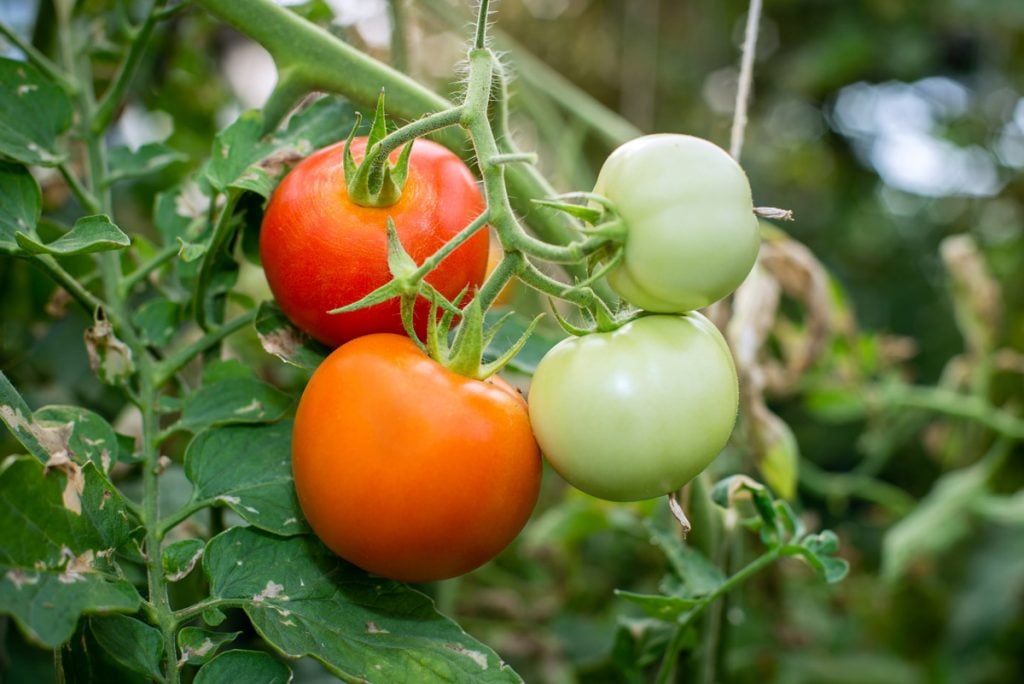
Are GMO Crops Healthy to Consume?
China was actually the first to sell a GMO strain of virus-resistant tobacco. But then, in 1994, “the Flavr Savr tomato (Calgene, USA) became the first ever Food and Drug Administration (FDA) approved GM plant for human consumption. This tomato was genetically modified by antisense technology to interfere with polygalacturonase enzyme production, consequently causing delayed ripening and resistance to rot.” (Source)
The Flavr Savr tomato was discontinued almost immediately because “it did not taste better and was more expensive than other tomatoes in the same market space.” (Source) In other words, Americans voted with their dollars, and the GMO crop was no longer profitable.
It’s important to note that GMO technology is a relatively new concept. So, it’s hard to say what the health concerns may be. We’re essentially the guinea pigs to this great big experiment because GMO crops have only been around for 20-something years.
It’s a possibility that they are, in fact, harmless. But it’s also a possibility that these modifications will cause unwanted health concerns yet to be discovered.
What we do know for certain is that many GMO crops today are created specifically to be pesticide-resistant. This means these crops can handle chemical pesticides being sprayed on them without harm to the plant. What this means for the consumer is that we’re now consuming traces of those pesticides.
That is something we can all agree is not healthy.

Examples of GMO Crops
The purple tomato is not the first GMO crop to be created and sold to the public. It was just the first GMO seed available to the home gardener. All other GMO seeds up to this point were only available for commercial sales.
Golden Rice
Bevin mentioned many GMO crops that have been released over the years. For example, Golden rice was bioengineered with corn to create rice high in beta-carotene to help with vitamin A deficiencies.
This rice has never been released to the public, as it’s still in testing.
Pink Pineapple
Another food that’s being developed is a pink pineapple that’s high in lycopene. Lycopene is an antioxidant and is what gives tomatoes their red color. The addition of lycopene in a pineapple turns the flesh pink.

Zucchini & Summer Squash
In the mid to late 1990s, a genetically modified disease-resistant zucchini, a yellow crookneck and a straight yellow summer squash was released. This is something available right now.
In fact, every year, approximately 25,000 acres of American farmland are dedicated to growing genetically modified zucchini. Most non-organic zucchini that you may encounter in the grocery store are likely genetically modified and grown right here in the United States.
The thing that boggles the mind about this is that zucchini is an insect-pollinated plant. But we’re not hearing of any conversations about the concern of GMO zucchini pollen getting into the home gardener’s garden, even though it’s been around for more than twenty years!

What’s the Point?
Where these GMO foods fall short is the reasoning behind eating them. If we want to eat a purple tomato for the additional anthocyanins, why wouldn’t we simply eat a red tomato (for the lycopene) and grab a handful of blackberries or blueberries to get all the anthocyanins we need?
There’s a reason why we’re encouraged to “eat the rainbow.” God has created a huge variety of foods for us to consume. When we start thinking we can do it better, this is where things get sticky.
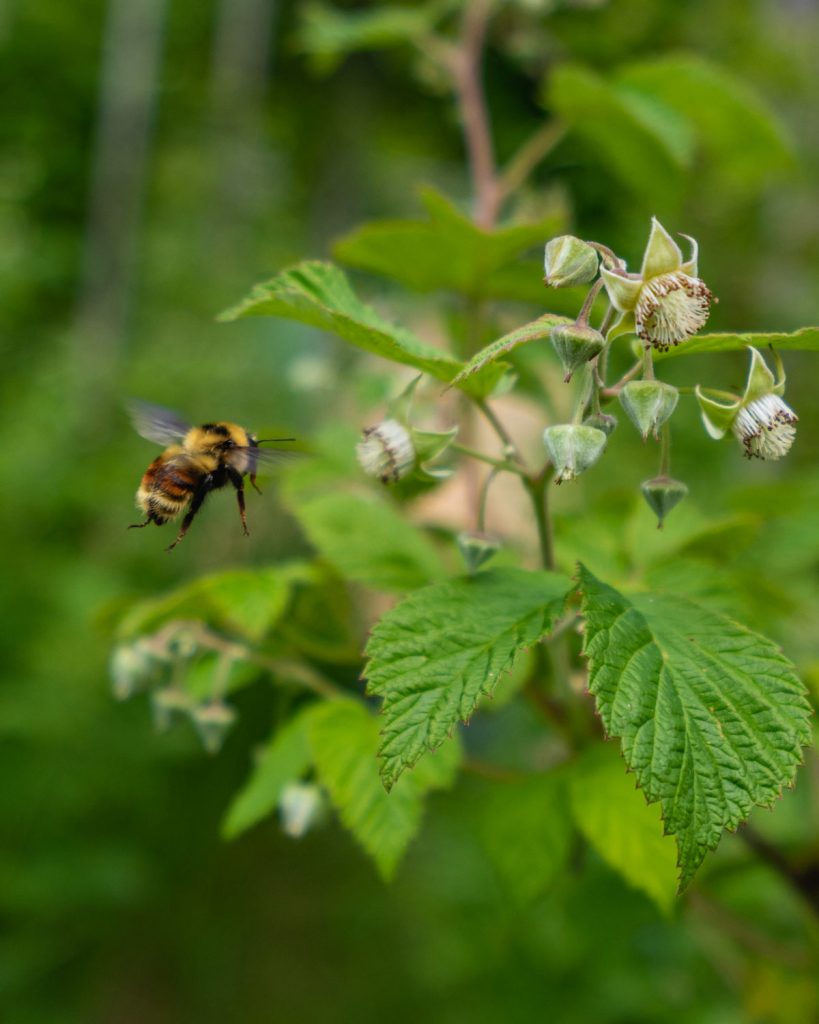
Ramifications of GMO Crops for the Home Gardener
Potential Cross-Pollination
Many of us home gardeners love to shop from companies that stand by the Safe Seed Pledge. And many home gardeners also save and sell their seeds. With open-pollinated crops, cross-pollination can occur, even when we don’t want it to.
Let’s say, for example, I’m growing an all-organic, non-GMO, open-pollinated garden. My neighbor purchases and grows the GMO purple tomato from Norfolk Plant Sciences. There’s a chance that when I save my tomato seeds at the end of the growing season, those seeds will end up with some of the GMO genetic markers in them.
Now, this causes two issues.
- Now I have GMOs inside my tomatoes. If we’re trying to avoid GMOs, this seems quite unfair.
- If I want to sell my tomato seeds, because the GMO purple tomatoes have patented technology (more on this below), I am now in violation of the law. So this cross-pollination, whether I realize if it’s happened or not, makes it illegal to sell seeds saved from my own garden. That is not control I’m willing to give away.
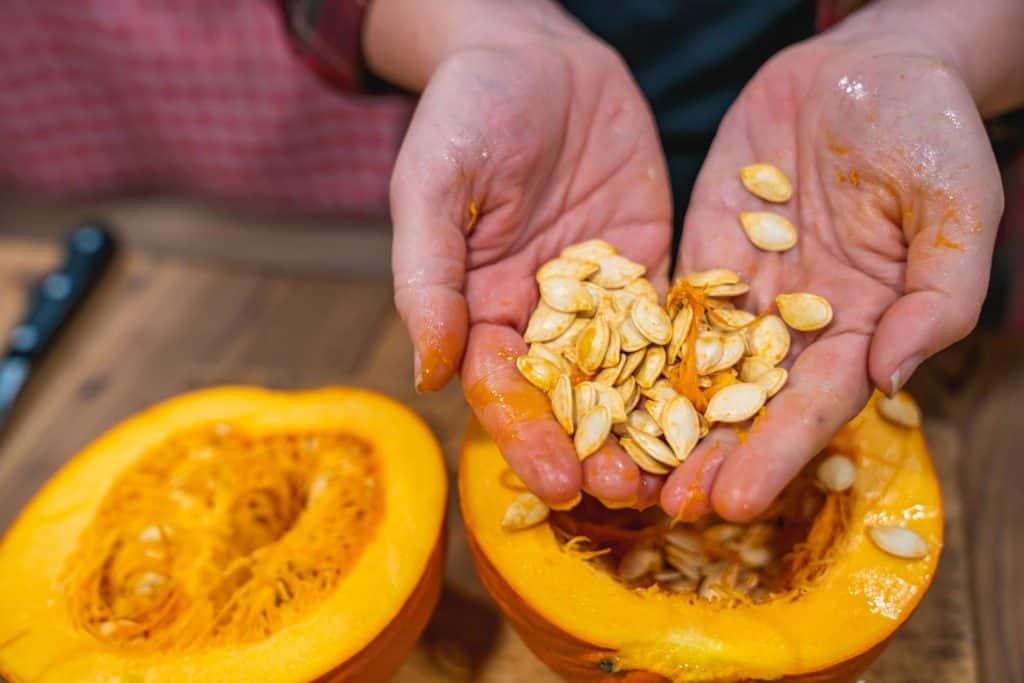
Legality of Selling GMO Seeds or GMO-Contaminated Seeds
GMO seeds are patented for their technology. If you’re a market gardener and GMO seeds cross-pollinate with your crops, you can now legally not sell your crops unless you test them for the genetics of those seeds.
This is actually something that has happened with Monsanto’s patented GMO corn. In Canada, there was a farmer whose crop got cross-pollinated from a farm growing the GMO corn almost five miles away. Monsanto sued this farmer and won.
The legal precedent for this to happen exists, so thinking, “This would never happen to me,” isn’t a luxury we have anymore.
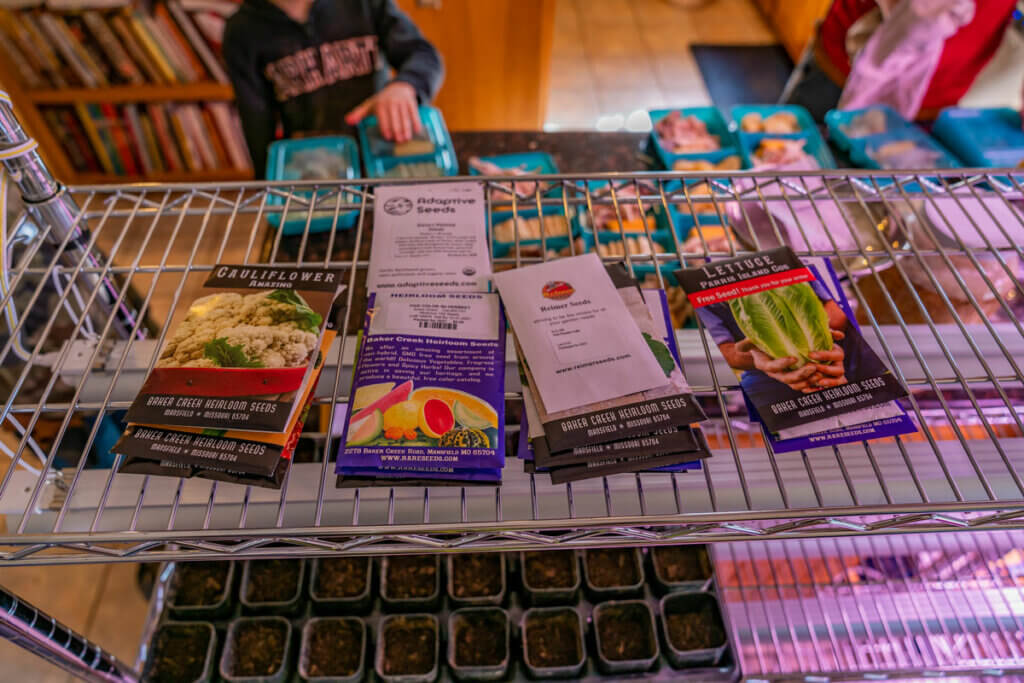
Baker Creek Seeds
In Baker Creek’s 2024 seed catalog they were offering a “Purple Galaxy” tomato that had purple flesh. It was a beautiful fruit, and so many people were excited to grow it.
When Norfolk released their GMO purple tomato, Baker Creek became suspicious of the seeds they were about to sell to home gardeners. It was seed they acquired from a grower in Europe, where the sale of GMO seeds is prohibited.
Baker Creek decided to third-party test the seeds they had in stock, which didn’t show traces of these GMO markers (mainly because these markers didn’t exist prior, so they didn’t even know what to test for). When these tests came back inconclusive, Baker Creek wanted to ensure they maintained their Safe Seed Pledge and so decided to pull the sale of these Purple Galaxy tomatoes.
It’s for this very reason that Baker Creek is the only company I will buy corn seeds from.

Conclusion
For Bevin (and me and Josh), we take issue when someone can genetically alter a seed and claim ownership of that patent, making it illegal to grow and sell that seed.
No one should have ownership of life, whether it’s the life of a person or a plant. That doesn’t belong to man. It is and always should be our right to grow and save seeds.
We all agree that the education of GMOs and seed saving is vital for the home gardener. If this conversation helps educate our viewers to learn how to save your own seeds and share your seeds with your community, that would be a fantastic byproduct of this GMO tomato seed fiasco.

Where to Find Bevin
Bevin offers an incredible book called Saving Our Seeds. The book walks you through how to save seeds from 45 different species. He also has a lot of other great books to check out. Be sure also to follow Bevin at the following places:
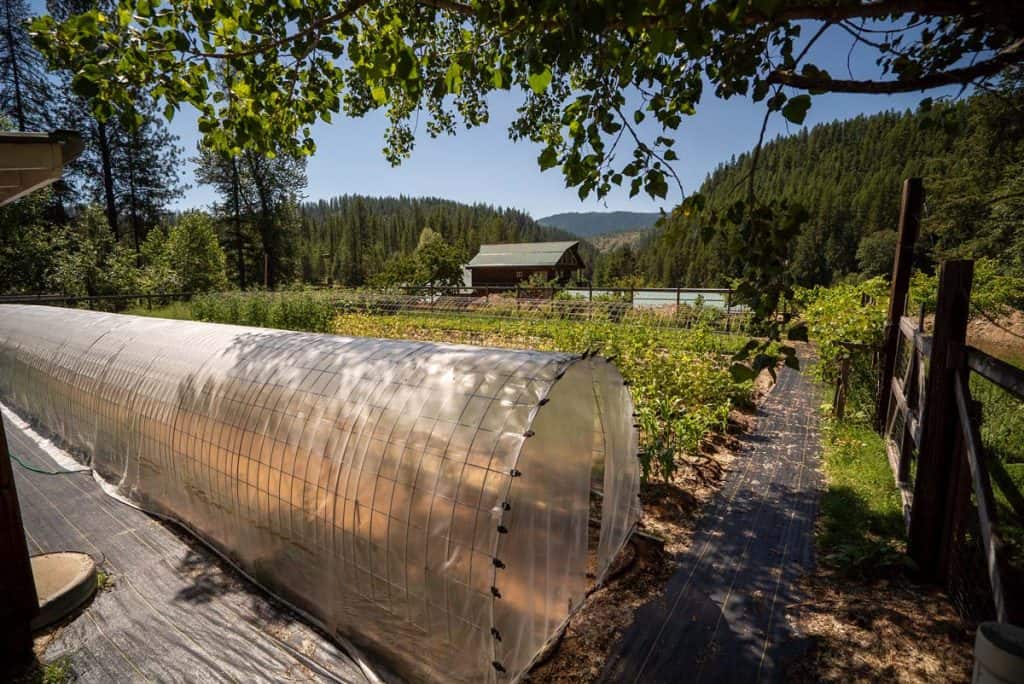
More Posts You May Enjoy
- Get a Jump Start on Early Spring Gardening – Pantry Chat #75
- Spring Garden Planning Ideas, Tips & Tricks
- How to Use a Vegetable Garden Planner
- Learn How To Start Seeds Indoors (What, When, Why & How)
- When To Start Seeds Indoors
- Seed Starting Problems (& How to Fix Them)
- Making Raised Garden Bed Rows & Super-Charging Your Soil
- Are Quality Garden Tools Worth the Cost?


















